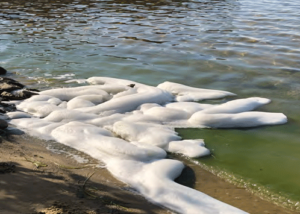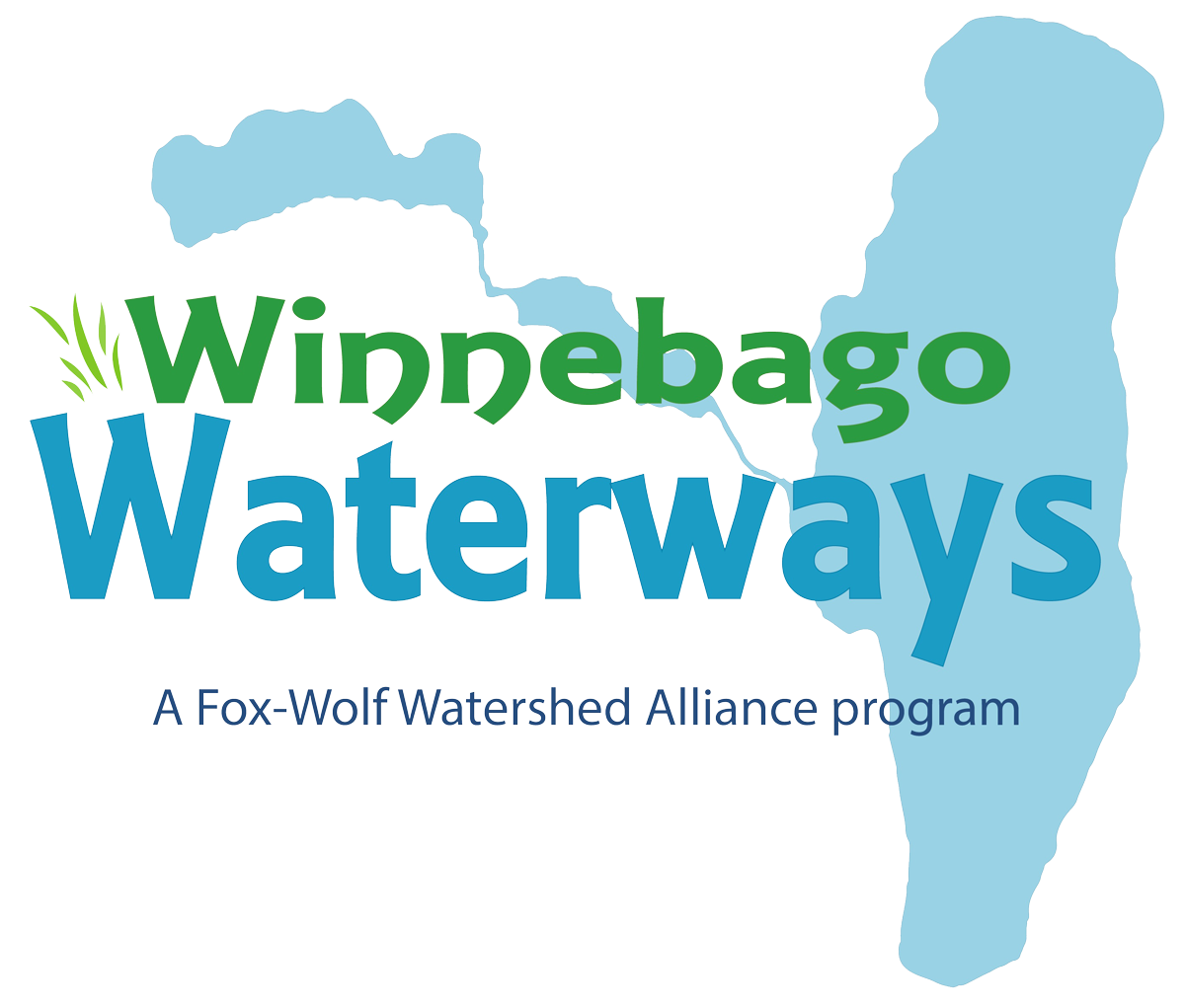If you have seen what looks like foam or bubbles in the water, you may wonder if it is natural or caused by pollution.
Most of the foam that we see on the surface and shorelines of our lakes occurs naturally when the surface tension of the water decreases and air mixes into the water. Natural organic compounds from decaying plants and animals can reduce the surface tension of water. When these compounds are mixed with air due to wind, waves, or water flowing through rapids or over a dam, bubbles are produced and can build up into larger sections of foam.
Usually this foam is not indicative of pollution! Some human products like detergent can cause foam that is similar in appearance, but the resulting foam usually dissipates quickly. Natural foam can stick around for awhile and keep building up if conditions are right. Natural foam usually smells like fish or soil while foam caused by detergents smell like soap or perfume. Naturally occurring foam is usually seen more in fall when plants start dying and decaying, and in the spring when plants sprout then lose their buds. Windy days can also result in more natural foam as the water is mixed and whipped up.

Foam on the water (Michigan Department of Environment, Great Lakes, and Energy)
A note about safety –
Surface water foam can contain contain algae, viruses, bacteria, parasites, decaying organic matter and other contaminants that, if swallowed, can pose a health risk to people and pets. Regardless of whether foam is the result of natural causes, pollution or a combination of the two, it can present a human health risk. The Wisconsin Department of Health Services recommends that everyone – people, pets and, especially, young children – avoid surface water foams.
For more information, check out the following sources:
https://dnr.wisconsin.gov/topic/Lakes/FAQ.html
https://dnr.wisconsin.gov/topic/PFAS/Foam
https://www.pwd.org/faqs/there-foam-accumulating-lake
https://www.michigan.gov: Inland-Lakes-and-Streams/Naturally-Occurring-Phenomenon-foam.pdf
Winnebago Waterways is a Fox-Wolf Watershed Alliance recovery initiative. Contact us at wwinfo@fwwa.org







